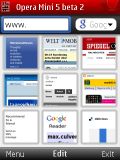 I've been running my 802.11n capable Fritzbox only on the older and slower 11g standard so far due to the lack of a notebook or other equipment being able to do anything faster . Also, with a sub 10 MBit/s DSL connection you don't really need more anyway. But now with a new notebook and a 25 MBit/s VDSL line to be installed, things have changed. So it's time now to do some performance measurements.
I've been running my 802.11n capable Fritzbox only on the older and slower 11g standard so far due to the lack of a notebook or other equipment being able to do anything faster . Also, with a sub 10 MBit/s DSL connection you don't really need more anyway. But now with a new notebook and a 25 MBit/s VDSL line to be installed, things have changed. So it's time now to do some performance measurements.
Here's the baseline: The Wi-Fi access point is in an adjacent room from the office and iPerf gives me a 802.11g throughput of around 21 MBit/s both in the office and also when I move close to the access point. The iperf server was running on a computer connected by Ethernet cable to the access point. That's pretty much the top speed for this version for the standard that can be reached in practice. On the client side I was using a notebook with an Intel 5100 AGN wireless chipset.
When both the iperf server and client machines were connected to the access point via an Ethernet cable, tops speeds reached 90 MBit/s, that's about the top speed of a 100 MBit/s twisted pair Ethernet connector. That's important to remember.
Next, I switched on the 802.11n capability in the Wi-Fi access point and switched to WPA2 encryption as the somewhat older access point chipset only runs 11n which this encryption. I also configured it for a 40 MHz channel, which is twice as wide as the channel used by the older 802.11g standard.
For the first test, I operated the access point in the standard 2.4 GHz band. Tops speeds were around 70 MBit/s, again both in the office and close to the router in uplink and downlink direction. During the transmission, the status window on the notebook showed a link speed of 135 – 150 MBit/s. At this point I thought that was not too bad.
For the next test I switched to the 5.8 GHz band as it's supposed to be less crowded and the neighbor search on the access point showed no other base stations in sight. Close to the access point I was also able to get 70 MBit/s. In the office, however, the top speed dropped down to only 30 MBit/s!? So either the higher frequency range couldn't handle the wall and additional distance, or the antennas in the notebook or access point were not optimized for this frequency band. O.k., I'll stick to the 2.4 GHz band then.
For a final test, I restricted the channel bandwidth to 20 MHz and I expected to see half of the 70 MBit/s I've seen earlier. To my surprise I still got 58 MBit/s out of the channel. So either the neighboring access points were interfering more with the 40 MHz wide channel or the access point can't really keep up with the transmission rate due to ciphering or other computationally extensive tasks and the air interface would have been capable of much more with the 40 MHz channel.
Another interesting number is the data rate generated by the TCP acks in the return direction. Running a 70 MBit/s TCP data flow in one direction requires a bandwidth of more than 1 MBit/s for the acknowledgments. That's quite something! That compares to a bandwidth requirement of around 400 kbit/s for the 21 MBit/s I got out of the baseline configuration.
 One thing I couldn't quite figure out where frequent throughput drops. Suddenly during a transmission, the throughput would drop down to just 2-3 MBit/s for tens of seconds and then just as suddenly things went back to normal. During those times I started a download over my 3 MBit/s DSL line to see if the throughput increases but I couldn't really see that. So either the notebook or the access point seems to have a problem. I'll get an access point with a new chipset soon and I hope I won't see this again. The second picture on the left shows the behavior in more detail.
One thing I couldn't quite figure out where frequent throughput drops. Suddenly during a transmission, the throughput would drop down to just 2-3 MBit/s for tens of seconds and then just as suddenly things went back to normal. During those times I started a download over my 3 MBit/s DSL line to see if the throughput increases but I couldn't really see that. So either the notebook or the access point seems to have a problem. I'll get an access point with a new chipset soon and I hope I won't see this again. The second picture on the left shows the behavior in more detail.
And one final number to contemplate: Over the course of only one and a half hours I transferred over 20 gigabytes of data. Not too difficult at those speeds.
While the measured speeds are already quite impressive I expect that things can go even faster especially in a 40 MHz carrier with newer chipsets. I'll keep you posted.



